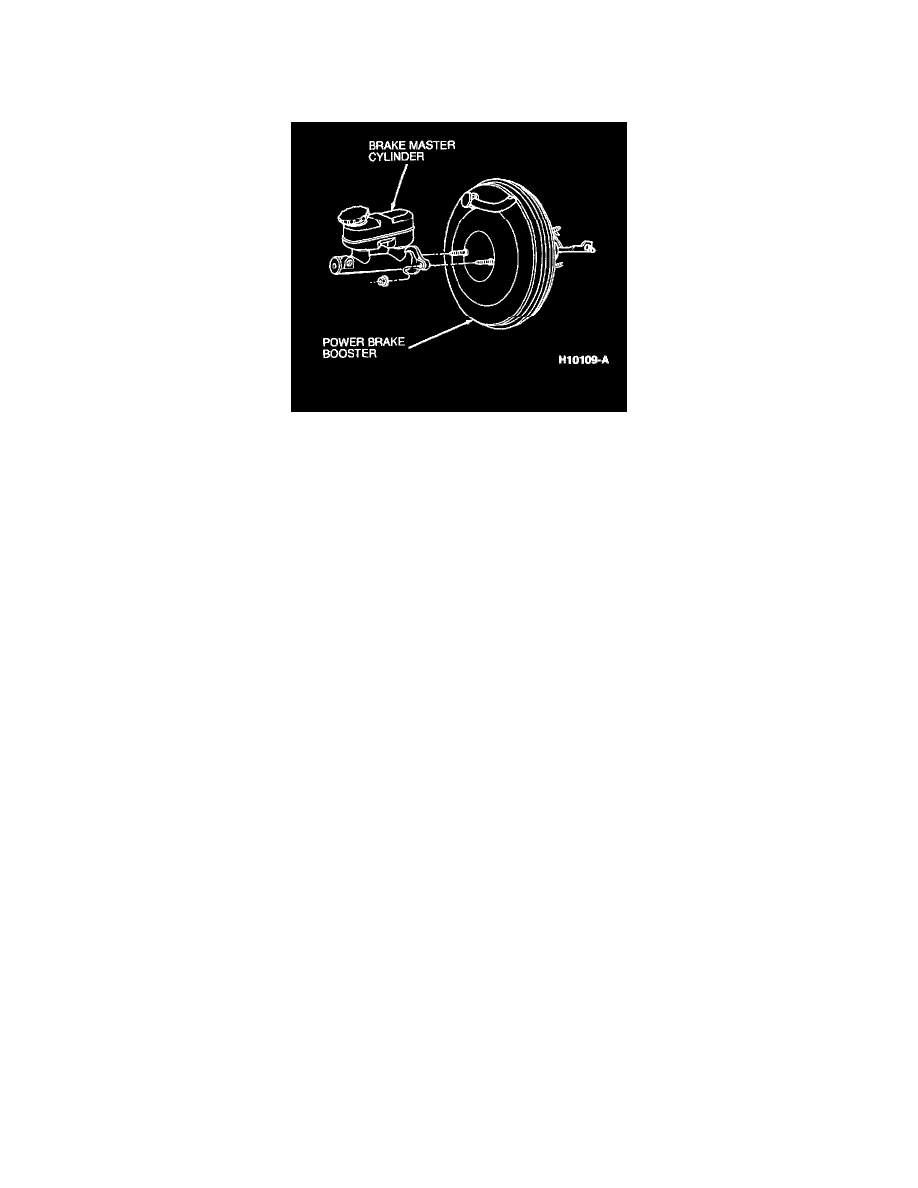Sable V6-183 3.0L DOHC VIN S MFI (1997)

Brake Master Cylinder: Component Tests and General Diagnostics
Bore End Seal Leak Test
REMOVAL
1. Apply service brake pedal several times to exhaust all vacuum in the system.
2. Remove nut retaining cowl top inner panel tube to brake master cylinder.
3. Disconnect cowl top inner panel tube from cowl and remove.
4. Disconnect brake fluid level warning switch connector, if necessary.
5. Remove two nuts retaining brake master cylinder to power brake booster assembly.
6. Slide brake master cylinder forward.
INSPECTION
^
Inspect end of master cylinder bore for signs of excessive leaking. Some fluid is normal due to the wiping action of the seal.
^
Inspect inside booster for presence of brake fluid. A plastic tie strap can be inserted through push-rod opening or through booster check valve
opening and into bottom of booster and checked for fluid.
^
If excessive fluid is found, master cylinder will need to be removed and overhauled and booster Should be replaced if booster is contaminated with
a large quantity of fluid. Refer to Master cylinder - Service and Repair. See: Service and Repair/Master Cylinder, Brakes/Overhaul
INSTALLATION
1. Position brake master cylinder on studs on power brake booster assembly.
2. Install retaining nuts. Tighten to 26-39 Nm (20-28 ft.lbs).
3. Connect cowl top inner panel tube to cowl.
4. Install nut retaining cowl top inner panel tube to brake master cylinder and tighten to 21-29 Nm (16-21 ft.lbs).
5. Connect brake fluid level warning switch connector, if it was disconnected.
Bypass Conditions Test
BYPASS CONDITION TEST
1. Check fluid in brake master cylinder. Fill brake master cylinder reservoir if low.
2. Observe fluid level in brake master cylinder reservoir. If after several brake applications the fluid level remains the same, measure wheel turning
torque required to rotate wheels with brakes applied as follows:
^
Engine should be "OFF".
^
Place transaxle in NEUTRAL and raise and support vehicle on.
^
Apply brakes with a minimum of 445N (100 lb) and hold for approximately 15 seconds.
^
With brakes still applied, exert torque on front wheels to 101 Nm (75 ft. lbs.).
-
If either wheel rotates, replace brake master cylinder.
Non-Pressure Leaks
NON-PRESSURE LEAKS
It is possible that all evidence of fluid leakage may have washed off if the vehicle has been operated in rain or snow because brake fluid is water
soluble. Refill system, bleed and apply the brakes several times. Examine the system to verify that the brake master cylinder reservoir fluid level is
actually dropping. Locate and correct the external leak. If fluid level drops and no external leak can be found, check for a master cylinder bore end
seal leak.An empty brake master cylinder reservoir condition may be caused by two type's of non-pressure external leaks.
Type 1: An external leak may occur at the master cylinder reservoir cap because of improper positioning of the gasket and cap. Reposition cap
